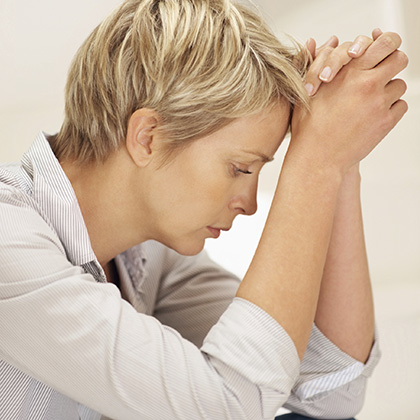
By now, most of us recognise that exercise is fundamental to good wellbeing. And in the context of prostate health, this holds particularly true. Below, we take a look at how regular activity can support an enlarged prostate or benign prostatic hyperplasia (BPH), as well as practical tips to incorporate more movement into your life.
What is an enlarged prostate?
Located just below your bladder and in front of your rectum, the prostate gland is roughly the shape and size of a walnut. As you get older, your prostate naturally increases in size. BPH occurs when the prostate gland grows larger than usual, squeezing the urethra and causing urinary issues.
 Enlarged prostate symptoms include:
Enlarged prostate symptoms include:
-
A weak or slow urine flow that starts and stops
-
Dribbling at the end of urination
-
A sudden urge to pass urine
-
Passing more urine during the day
-
Inability to fully empty the bladder
-
Frequent urination at night (nocturia)
Exercise and BPH
Lifestyle changes are some of the best ways to manage benign prostatic hyperplasia. Regular movement offers two notable benefits for an enlarged prostate. Firstly, it may reduce the risk of BPH from the outset. Secondly, it may improve the mental health of those who develop the condition.
BPH prevention
Prevention is better than cure, and exercise seems to lower the risk of BPH. One study reported that men who engaged in 2-3 hours of moderate walking every week were 25% less likely to experience enlarged prostate symptoms (1).
Additional research suggests regular movement can also lower systemic inflammation in the body, which is associated with adverse health outcomes and may potentially increase the risk of BPH-related issues (2).
Supports mood
If you go on to develop BPH, it’s natural to find enlarged prostate symptoms challenging. The urinary issues associated with BPH often trigger anxiety, frustration, and embarrassment. Outdated notions of masculinity can also make it hard to speak openly to loved ones and romantic partners for fear of being ‘emasculated’. If you’re finding things tough, you’re not alone.
Fortunately, there are many ways to support your mood – and exercise is one of the best tools for the job. Physical activity releases a cocktail of ‘feel-good’ chemicals like endorphins, serotonin, and endocannabinoids that lift your mood and give you an enormous sense of wellbeing.
Regular movement also enhances sleep quality and builds self-esteem – areas often impacted by benign prostatic hyperplasia.
The science for this is unwavering: a study using data from 1.2 million people revealed that all types of physical activity were associated with reduced mental health symptoms, compared with no exercise (3).
All this is to say that exercise is a powerful medicine for your mood if you’re struggling with enlarged prostate symptoms.
Best exercise for an enlarged prostate
The good news is that you don’t need to devote hours to the gym to reap the benefits for your prostate health and overall wellbeing. Just 30 minutes of moderate activity five times a week is enough. If 30 minutes feels too overwhelming initially, break it down into 15-minute or 10-minute sessions.
For clarity, moderate means your breathing is slightly heavier than normal, but you’re not out of breath. For instance, you should be able to hold a conversation while running.
Walking, hiking, swimming, tennis, and golf are excellent choices to keep your prostate health in check. Being active in the garden also contributes to your weekly movement goals.
Ultimately, aim to find an activity that you enjoy. If you choose something you’re passionate about, it will be much easier to stay motivated.
Can Kegel exercises help BHP?
As you get older, the muscles around your bladder can weaken, which may exacerbate symptoms associated with BPH, like frequent urination. In this context, Kegel exercises, designed to strengthen the pelvic floor, may help.
First, you need to find your pelvic floor muscles. To do this, imagine stopping urine flow and holding in flatulence simultaneously. You should have a sense of ‘lift’.
Always begin Kegel exercises with an empty bladder. Then, lie on the floor with your knees apart and bent. Tighten your pelvic floor muscles for three seconds, then relax them. Repeat a few times. You could even try this discreetly while standing or sitting throughout the day.
Exercises to avoid if you have an enlarged prostate
Making an effort to move more for your prostate health is great. However, it’s worth exercising caution around rowing, horse-riding, and cycling without a padded saddle. These activities require prolonged sitting, putting pressure on the pelvic region and potentially exacerbating an enlarged prostate.
Other lifestyle measures for BPH
In addition to weaving more exercise into your daily life, simple tweaks to your lifestyle can also support enlarged prostate symptoms.
-
Follow a Mediterranean diet: Research has found men who eat more fruit and vegetables are less likely to develop prostate problems (4).
-
Include certain nutrients like zinc, vitamin D3, beta-sitosterol and quercetin. You can explore our expert nutritional formulas for mature men here.
-
Take it easy on red meat, dairy, and caffeine. These foods commonly exacerbate BPH symptoms and urinary issues.
-
Moderate alcohol consumption. Heavy drinking often exacerbates BPH.
-
Reduce stress. Anxiety and stress may worsen enlarged prostate symptoms, so finding coping strategies is crucial. Relaxation techniques, engaging in your favourite hobbies, and exercise can help you feel balanced and grounded.
-
Support sleep hygiene. Quality sleep can help manage enlarged prostate symptoms. Learn more about improving your sleep here.
-
Avoid smoking. Quitting smoking is essential for those with BPH.
-
Reach out for help. Navigating enlarged prostate symptoms can be emotionally demanding. You don’t need to go through it alone. Aside from seeking medical guidance, you can lean on your loved ones, talk to a therapist, or contact our Nutrition Advisors.
Read more about lifestyle changes to support benign prostatic hyperplasia here.
Want to find out more?
Exercise is a great tool for your overall health – and BPH is no different. Not only can regular movement reduce the risk of an enlarged prostate in the first place, but it can also offer huge emotional relief for those who develop the condition.
As always, our team of expert Nutrition Advisors is available to provide free, confidential advice via email, phone, and Live Chat* should you need it. You can also read more about supporting your prostate health on Nutrition Buzz.
A final note from our Nutrition Advisors: If you experience any signs of urinary discomfort, such as nocturia (frequent urination at night), a sensation of incomplete bladder emptying, or a weakened or interrupted urine stream, it’s important to consult your doctor for medical advice. They can help determine if you have benign prostatic hyperplasia or another prostate condition that may need prompt medical intervention.
*Subject to cookie consent
References:
-
Lee HW, Kim SA, Nam JW, Kim MK, Choi BY, Moon HS., The study about physical activity for subjects with prevention of benign prostate hyperplasia. Int Neurourol J. 2014;18(3):155-62.
-
Wolin KY, Grubb RL 3rd, Pakpahan R, Ragard L, Mabie J, Andriole GL, Sutcliffe S., Physical activity and benign prostatic hyperplasia-related outcomes and nocturia. Med Sci Sports Exerc. 2015;47(3):581-92.
-
Chekroud SR, Gueorguieva R, Zheutlin AB, Paulus M, Krumholz HM, Krystal JH, Chekroud AM., Association between physical exercise and mental health in 1·2 million individuals in the USA between 2011 and 2015: a cross-sectional study. The Lancet Psychiatry. 2018;5(9):739-746.
-
Russo GI, Broggi G, Cocci A, Capogrosso P, Falcone M, Sokolakis I, Gül M, Caltabiano R, Di Mauro M., Relationship between Dietary Patterns with Benign Prostatic Hyperplasia and Erectile Dysfunction: A Collaborative Review. Nutrients. 2021;13(11):4148.
You Might Also Like
Disclaimer: The information presented by Nature's Best is for informational purposes only. It is based on scientific studies (human, animal, or in vitro), clinical experience, or traditional usage as cited in each article. The results reported may not necessarily occur in all individuals. Self-treatment is not recommended for life-threatening conditions that require medical treatment under a doctor's care. For many of the conditions discussed, treatment with prescription or over the counter medication is also available. Consult your doctor, practitioner, and/or pharmacist for any health problem and before using any supplements or before making any changes in prescribed medications.

Olivia
Olivia Salter has always been an avid health nut. After graduating from the University of Bristol, she began working for a nutritional consultancy where she discovered her passion for all things wellness-related. There, she executed much of the company’s content marketing strategy and found her niche in health writing, publishing articles in Women’s Health, Mind Body Green, Thrive and Psychologies.
View More



